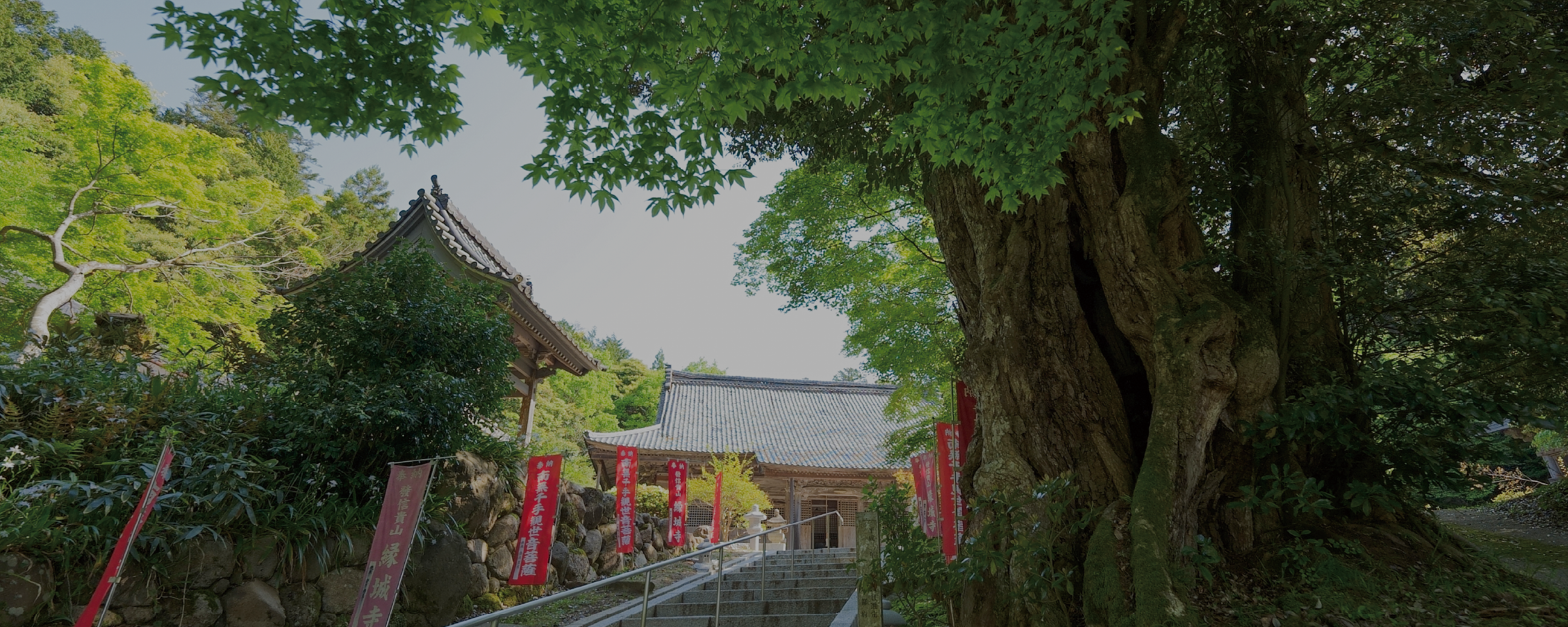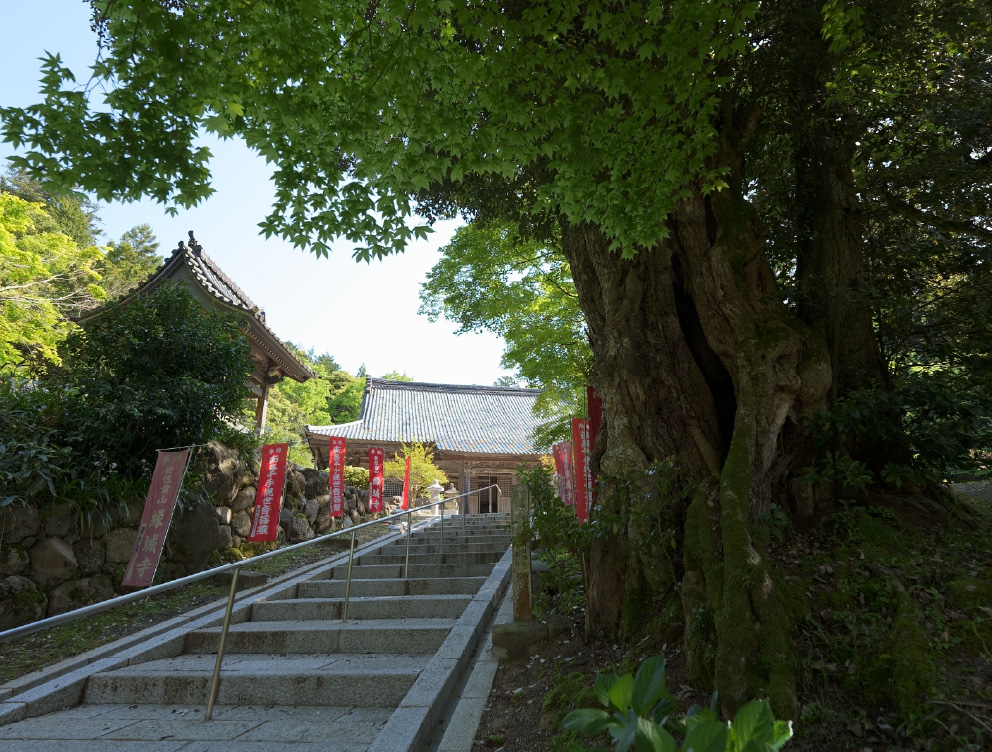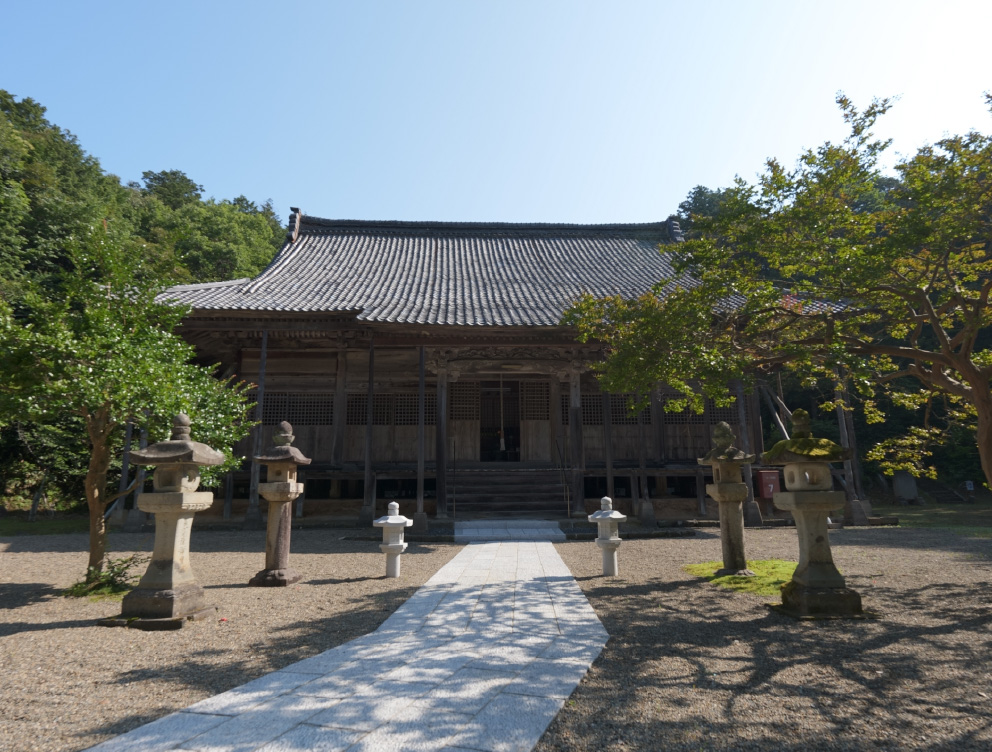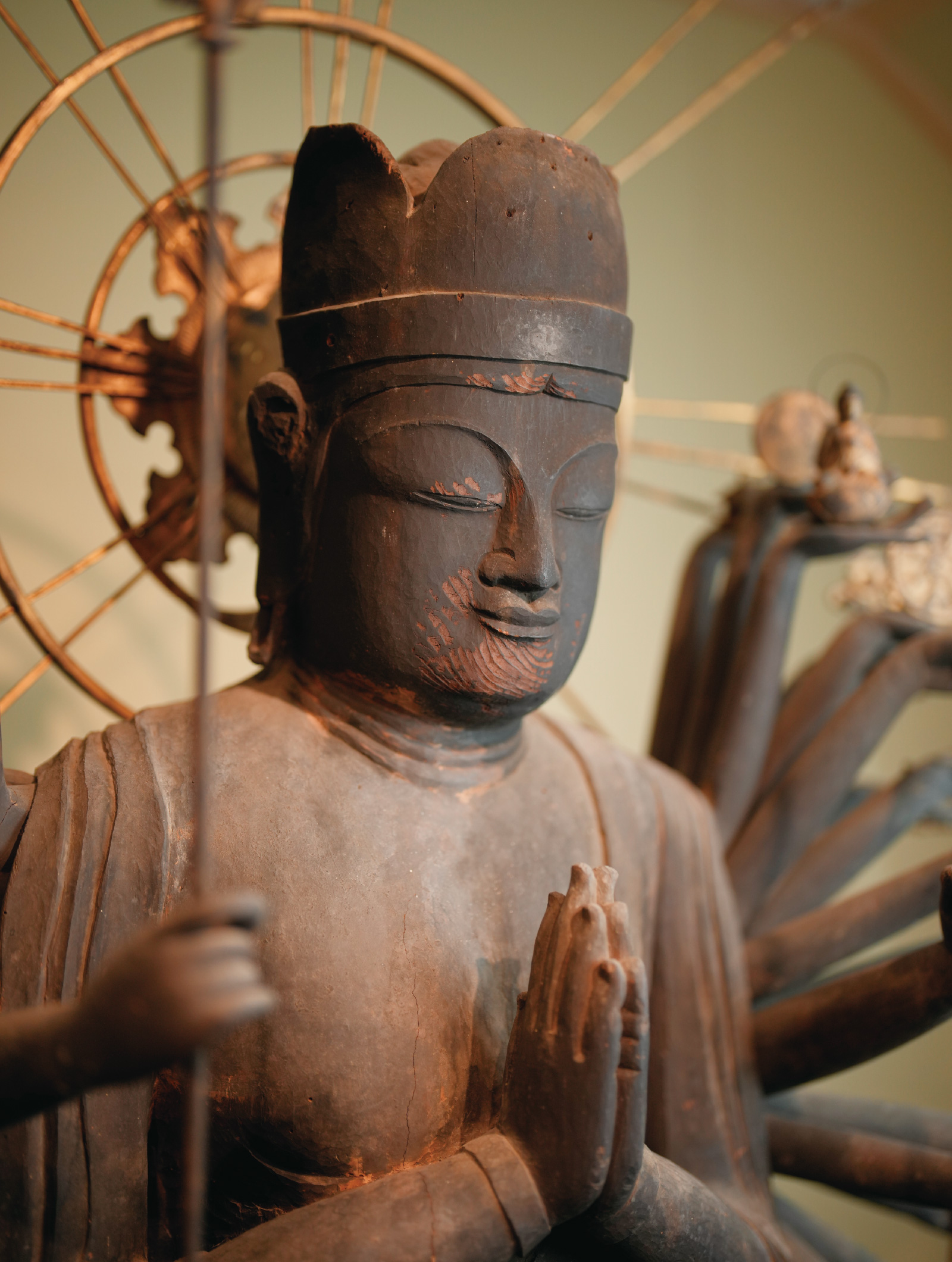Enjoji Temple
A historical record of Enjoji Temple states, "In 717, when the temple’s founder, [the Indian monk known as] Zenmui arrived in Japan, he discovered 18 benevolent deities protecting the land, where purple clouds floated, and the light of Kannon [the Buddhist god of compassion] was as brilliant as the full moon. Zenmui was delighted, and when he inquired about the origin of this light, he was given a sacred statue."
Emperor Konin built the temple in 771 and named it Senjuin, and Emperor Ichijo made it an imperial temple in 988. Emperor Kanmu gave the temple the name Enjoji in 795. Since then, Enjoji Temple has flourished as a center of Buddhist faith in the Tango region, boasting 7 halls and 25 other buildings that extend over 300 meters (980 feet) from the outer gate to the main hall. The smoke and aroma of incense always fills the valleys.
The temple has survived three major fires and been rebuilt each time. It is home to a large number of wooden upright statues of the thousand-armed Kannon and stone pagodas that have been designated as Important Cultural Properties of Japan, as well as cultural properties designated and registered by Kyoto Prefecture and cultural properties designated by Kyotango City. Some of these treasures are on display for public viewing on October eighteenth. Furthermore, for over one thousand years until the Meiji Restoration in 1868, Enjoji Temple’s priest also served as the head priest of the local shrine, Karatachi no Miya.
Other names used for the Enjoji Temple include Hashikisan ("Mount Hashiki," with "mountain" being used figuratively to mean "Buddhist temple"), Hashiki-dera (Hashiki Temple), and Hachiki no Miya (Hashiki Shrine). These are based on the traditional place name of the local community, Hashiki, and speak to the temple's importance in local history.
Important Cultural PropertyWooden Senju Kannon Statue
This is the principal image of Enjoji Temple. It is generally hidden from the public and only available for viewing on special days and during certain events.
Its facial expression shows characteristics of the early Heian period (794 - 1185), but the shallow carving of the garment folds and the slenderness of the torso exhibit later-era characteristics. It is made from a single piece of wood with no internal joints and is _tted with a three-petaled crown with no top section (according to the sutras on which it is based). The knots of the wood have been left as they are in the carving, there are chisel marks all over the body, and the overall form is distorted. The hands for praying and the bowl-holding hands are made from the same material as the torso, but the opposite-side hands and pedestal are mostly later additions made from different materials. The statue stands 152 cm (5 feet) tall.
Important Cultural PropertyHokyointo Pagoda
A hokyointo is a seven-story pagoda that houses the sutra All Tathagata’s Secret Mind and Whole Body Dharani, which explains the secrets of the Tathagata’s (Buddha’s) mind. It is said that those who worship and make offerings to this pagoda will close the gates of hell, instantly eliminate their sins and attain enlightenment. It is also believed that people who worship at and make offerings to this pagoda can avoid all the hardships of this world and attain immeasurable blessings. Its inscription reads “Year 6, Buddhist follower Yukuhide”; it was erected as a memorial to the Indian monk Zenmui.
The characteristics of the era are evident in the latticework and lotus petals of the base stone. The pagoda with its regular stacked foundation is an imposing relic that has been well preserved. The total height is 313.9 cm (just over 10 feet), and each side of the base is 227.6 cm (roughly 7.5 feet) long.
-

No. 1 Kannon-ji Temple
(Fukuchiyama City) -

No. 2 Tenneiji Temple
(Fukuchiyama City) -

No.3 Ankokuji Temple
(Ayabe City) -

No. 4 Komyoji Temple
(Ayabe City) -

No. 5 Shoreki-ji Temple
(Ayabe City) -

No. 6 Matsunoo-dera Temple
(Maizuru City) -

No. 7 Kongoin Temple
(Maizuru City) -

No. 8 Taneji Temple
(Maizuru City) -

No. 9 Chionji Temple
(Amanohashidate) -

No. 10 Enjoji Temple
(Kyotango City)




